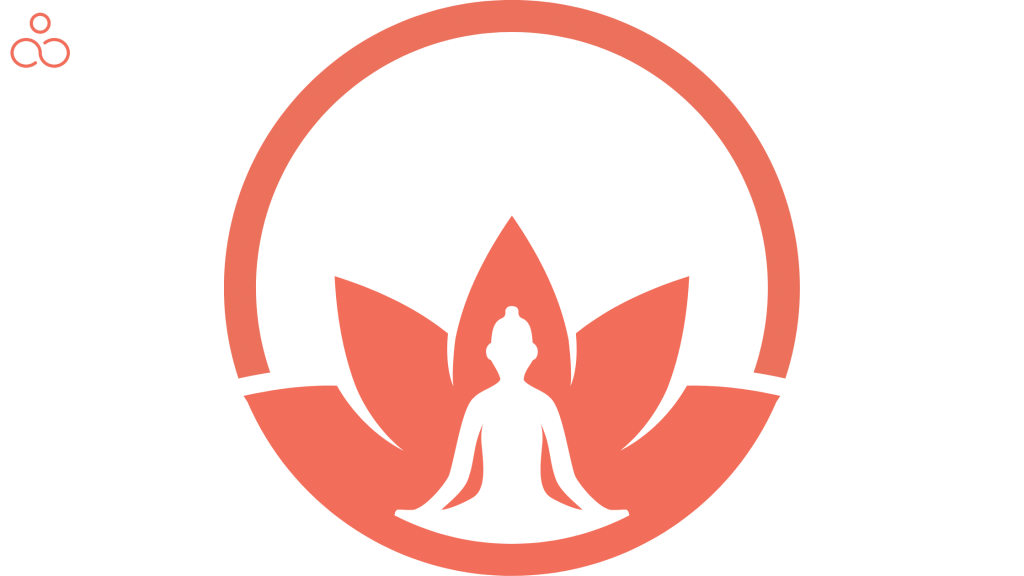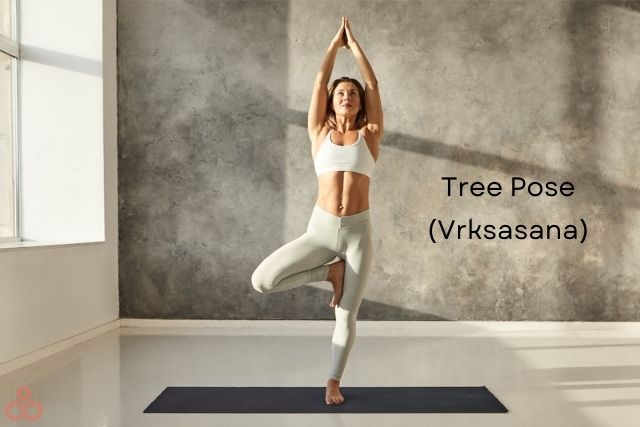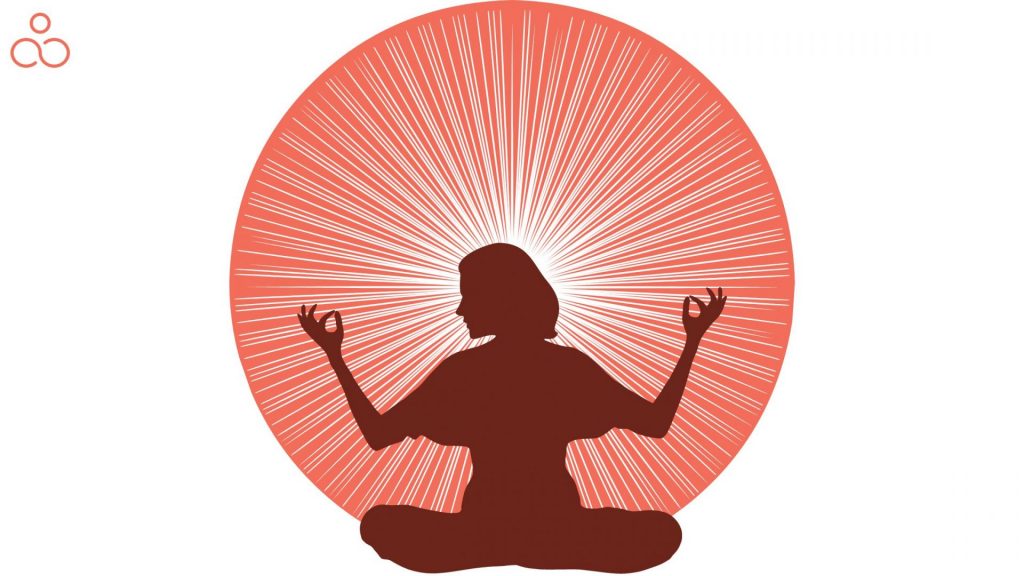Amidst the overwhelming stress of everyday life, little things often throw us off balance. They put our minds in conflict and impact inner peace. As the mind moves between regrets from the past and hopes for the future, worry and anticipation take over the present. This clutters the mind with fear, cravings, and desires.
Yoga helps to reduce this stress and clutter and pranayama helps to destress. Regular practice can help to get mental clarity and improve self-connection.
While yoga is a form of exercise routine, it is a lot more than just a physical practice. Apart from helping to develop strength and stamina, it also offers spiritual benefits. This study has explored the link between yoga and spirituality.
Here are some spiritual benefits of yoga that make it a holistic routine:
Helps to derive inspiration and creativity: Humans are designed to carry wisdom, guidance and inspiration deep within them. However, the distractions from the world and worrisome thoughts often take our attention off the inner elements. Regular yoga practice and meditation allow us to calm our minds and declutter them. This way, one can embrace hope and identify the inspiration and creativity within them.
Helps to concentrate better: Regular yoga and meditation help to connect with the present moment and focus on the task at hand. Whether the poses are complex or simple sequences, practitioners can focus better on each step and learn to tackle the challenges better. This reflects on aspects of life beyond the yoga sessions as well. For instance, practitioners can focus better on office or coursework or aspects of their personal life.
Improves Awareness: Committing to a regular yoga routine allows practitioners to be more aware of their inner spirit and energy. This helps them to be more conscious about the driving force within them and makes them better motivated. Practitioners also have distinct reasons behind their thoughts and actions. This spiritual awareness is integral to any yoga practice.
Helps to eliminate self-doubt and improve confidence: Low self-esteem is a common phenomenon that puts people into doubt whenever they need to interact with others or make important decisions. Even those who do not get jitters while interacting with others face anxiety and low confidence at times. Irrespective of the category you fall into, it is a good idea to commit to a yoga practice. This is because yoga eliminates feelings of self-doubt and comparison with others. It ensures that the practitioner follows the path of self-discovery and competes with their own past performance. It is thus spiritually beneficial for both adults and children.
Heals body and mind: The body and mind go through a lot regularly from a poor upbringing to toxic company to bad quality of air and food. When yoga helps the mind and body to connect better, it is easier to heal from hurt and trauma. This helps to feel more content and better equipped to deal with the challenges of life.
Helps to get rid of judgment: In the absence of inner consciousness, we tend to judge others based on our understanding of good and bad. A better inner connection helps to understand that everyone is different and that differences do not mean bad. Better self-acceptance also makes way for acceptance of others and their differences.
Helps to discover compassion: Yoga is not confined to the mat or the yoga studio. It helps to stay calm in the real world where not everyone concurs with your thoughts. It also enables kindness to self and others by giving a deeper perspective towards life.
Helps to practice gratitude, empathy, and forgiveness: When the mind connects with the body at a deeper level, it helps to understand how life is a gift. It helps to inculcate important feelings like gratitude, forgiveness, and empathy. Thus, the practice deepens the understanding of the world and helps to be calmer in relationships and worldly connections.
Yoga postures and their spiritual significance

The ancient practice of Yoga dates back to 5000 years ago. It originated in India and has gained popularity worldwide for the multitude of physical, mental, and spiritual benefits that it unlocks. Many practitioners also regard it as a form of meditation because it requires complete attention as the yogis transition from one pose to another. These transitions allow the body and mind to change significantly, and similar changes are reflected in various aspects of life.
Yoga postures are known for their physical benefits, but most of them have deeper objectives. They offer abundant benefits beyond basic stretching and strengthening, and thus practitioners benefit holistically. Below are some popular yoga poses with their spiritual benefits:
- Padmasana or the lotus pose: Also known as the lotus pose, Padmasana derives its name from the lotus flower, which is regarded as a symbol of purity. It is also associated with an ‘unconstrained’ generation and thus represents spiritual development, birth and growth. The journey of a lotus from the muddy waters to being a gorgeous flower has great spiritual significance. The growth of a human is often symbolized using the lotus example where the roots of the human being are in the world similar to the muddy water. However, the human mind is known to dwell in the divine, similar to the blossoming of the beautiful lotus above the water. Completing the lotus yoga pose signifies complete detachment as the lotus petals symbolize. The analogy is drawn using the example of water droplets that roll off the lotus petals and don’t stick to them. Similarly, the yoga practitioner will not be attached to the world or anything in it.
Important info for this pose: The Padmasana is commonly used by practitioners across the world for pranayama and meditation. Breathwork is a very important aspect of this pose. Deep and slow breathing is known to purify and energize and the pose helps to stay in sync with the body and discover inner potential.
- Virabhadrasana or warrior pose: Ancient yogic philosophy believes self-ignorance to be the primary enemy of a human being. A lack of self-awareness is known to cause immense suffering to others and the self. Virabhadrasana or the warrior pose helps the practitioner to face inner demons like ignorance and ego by inculcating courage and strength. There are primarily 3 warrior yoga poses. These poses require extending the legs and pressing them into the ground along with engaging the core and extending the arms. The pose helps to prepare spiritually for inner battles, apart from developing physical strength.
- Balasana or child’s pose: Most beginner yoga practitioners count Balasana or the child’s pose among the easiest yoga poses. However, despite being beginner friendly, the pose is more profound than it is often perceived. It involves kneeling on the floor with legs tucked below. The torso rests on the thighs with arms by the side. They can also be stretched forward with palms on the floor. The pose signifies surrender similar to that in children. The objective of the child’s pose is to maintain a position where you do nothing. This helps greatly with stress relief. The pose helps to create a calm space where the spirit can rest. It is synonymous with self-love and growth and strives to eliminate pressure from external factors. Paired with the right breathing techniques, the posture enables a better connection between the mind and body and helps to stay calm and relaxed for longer. It is a spiritually enhancing and emotionally satisfying yoga pose that forms an important part of multiple sequences.

- Vrkshasana or tree pose: The tree pose or Vrkshasana improves the balance in the body. The process of gaining balance is analogous to a tree that stays rooted but sways with the wind. Similarly, the body stays firm on the ground but may sway gently. This combination of movement and balance helps to spiritually accept the body’s position in the world. It is firm yet capable of movement.

- Shavasana or corpse pose: If you have ever been to a yoga session, you are likely aware of the Shavasana. Also known as the corpse pose, it offers relaxation as you lie on your back and close your eyes. The body stays still and the mind experiences peace. It can be an ideal time to communicate with your inner self without getting distracted. On the spiritual front, this pose is also about surrendering goals, intentions and connection to the world. It emphasizes that the only connection that completes you is the one with self. It allows the practitioner to find peace in stillness. Also, in yoga, death is seen as the culmination of life and thus associated with high importance. The Shavasana resembles death and helps to prepare for it because it is an inseparable truth of life. This pose helps to merge the mind with the inner spiritual self and that is the definition of spiritual relaxation, which is as important as physical and mental relaxation.

Why is spirituality important?

Spirituality is about understanding the true meaning of happiness and imbibing it in life. It is all about living in the moment and loving yourself. It governs how one responds to situations and replaces reactions with self-connection and better responses to all types of situations.
While sleep can help to ward off physical fatigue, the deeper stresses need more effort to be eliminated. Yoga and meditation help to cleanse consciousness and thus offer true rest and refreshment.
FAQs
Which form of yoga is the most spiritual?
Among all forms of yoga, Kundalini yoga is known to be the most spiritual and rooted in philosophy. A typical kundalini yoga session focuses on meditation, breathing and chanting and is often chosen by practitioners looking for a spiritual focus.
How is yoga connected to spirituality?
Yoga may seem to be all about physical poses and finesse but it is more about peace and clarity of mind. It helps practitioners to attain peace and connect with their inner selves. It also improves focus and helps practitioners find a deeper meaning in the materialistic world.
Is yoga religious or spiritual?
The origin of yoga can be traced back to religion but it has become religion agnostic over the centuries of its existence. It is known as a spiritual practice that runs on the belief that the spirit, mind and body are one and anyone can gain inner sanctity based on how they perceive the practice.
How can yoga help to connect to the self?
Yoga is commonly known as a gateway to mental and spiritual growth. It helps to improve mindfulness, self-discipline, focus and peace. This increases self-awareness and helps the practitioner to grow as an individual.
Conclusion
A calming yoga practice allows practitioners to embrace peace. It helps them to slow down and get in sync with themselves and the world around them. While it is important to strike the right poses, attaining peace and decluttering the thoughts is quintessential. Practicing yoga with a focus on spirituality helps to awaken the inner self and transform it. This also means realizing potential and harnessing it to make a change in life. Spiritual fulfillment helps to feel happier and calmer and thus impacts physical and mental well-being as well. Connecting to the spiritual side is also important because it helps to focus on principles, values, relationships and health. Yoga is thus a comprehensive package that promotes holistic wellness. It offers techniques to benefit the mind, body, and soul and helps to connect to the inner self. Explore yoga to get a better connection to your spiritual self.

